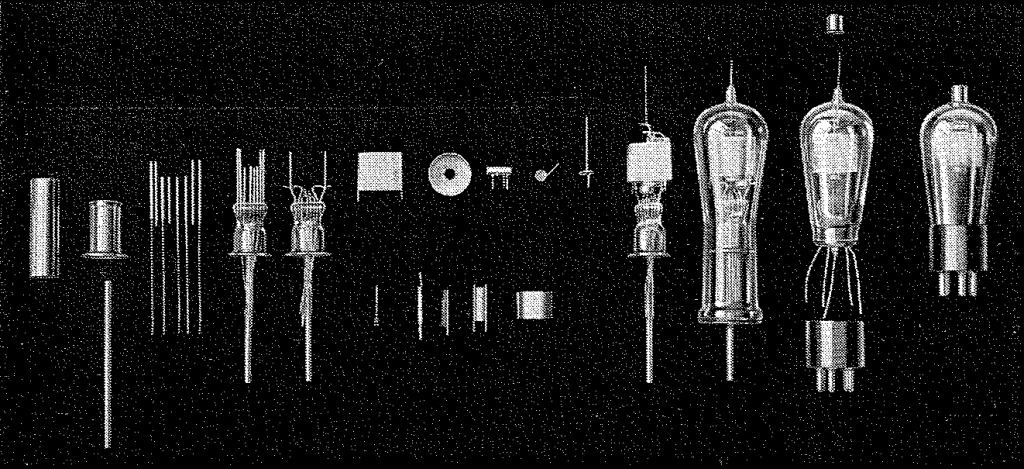
A marvellous device
The radio tube is a marvellous device. Although it appears to be a fragile affair constructed of metal and glass, in reality it is a rugged instrument that makes possible the performing of operations, amazing in conception, with a precision and a certainty that are astounding. It is an exceedingly sensitive and accurate instrument – the product of coordinated efforts of engineers and craftsmen. Its construction requires materials from every corner of the earth. Its use is world-wide. Its future possibilities, even in the light of present-day accomplishments, are but dimly foreseen, for each development opens new fields of design and application.
When the cathode is heated, electrons leave the cathode surface and form an invisible cloud in the space around it.
(RCA Radiotron Co.: The RCA Radiotron Manual No. R-10, 1932, p. 1)
This device referred to as a radio tube in the old years, has received many names: electron tube, vacuum tube, electronic valve or valve in the UK, or just a tube. Invented in 1904 by the English physicist John Ambrose Fleming, as a result of experimenting with Edison electrical bulbs. However, it was Lee De Forest who is credited with inventing the triode tube in 1907.
Vacuum tubes were a basic component for electronics throughout the first half of the twentieth century.